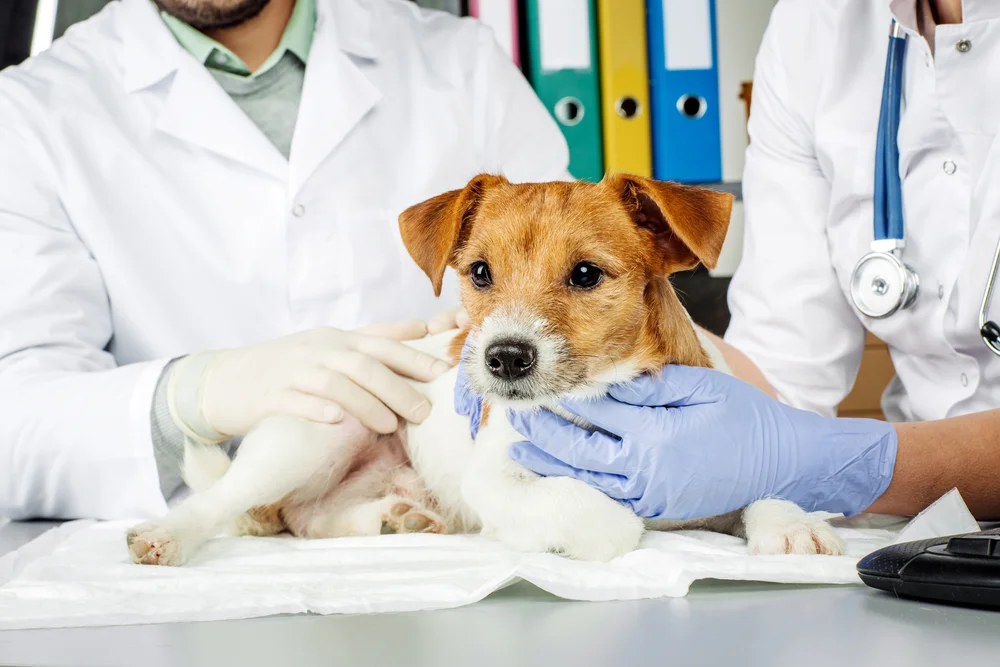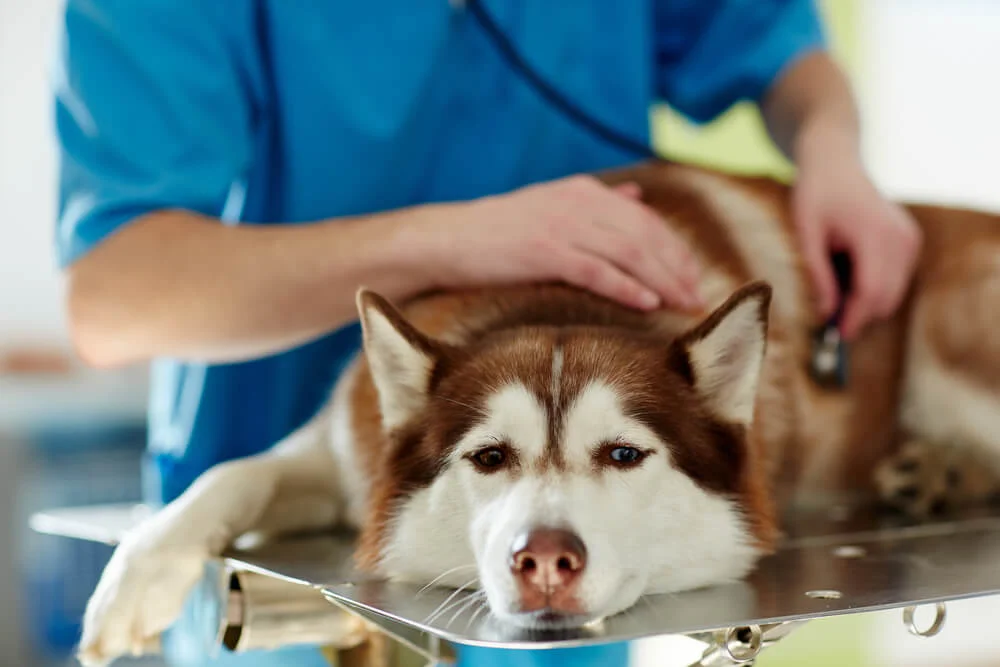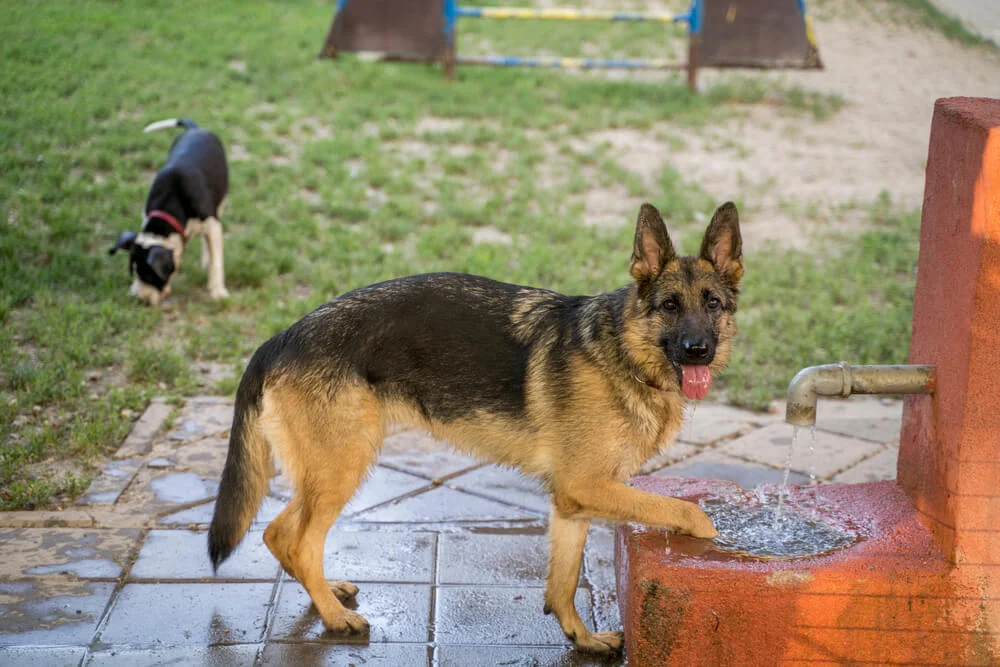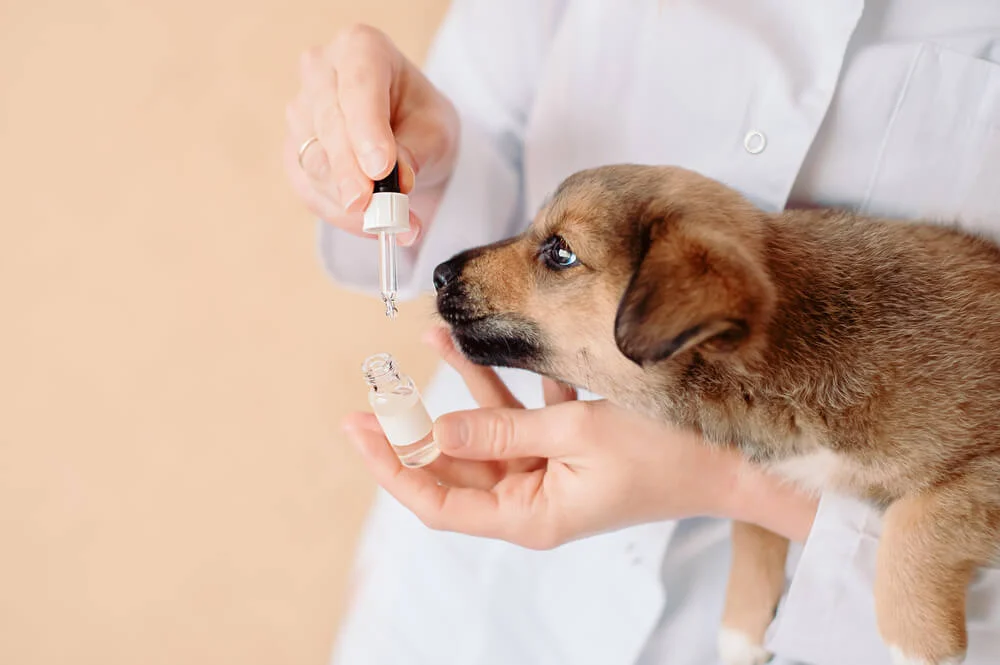
If your dog receives a diagnosis of diabetes, you may automatically think about sugar-related diabetes. The scientific term for that is “diabetes mellitus”. However, there’s another form of diabetes that is unrelated to sugar. It is called “diabetes insipidus”!
You may wonder what diabetes insipidus (DI) is, whether it is serious, and whether there is a natural treatment. Read on to find out!
What is diabetes insipidus?
Before exploring the abnormal, we must understand what’s normal! It’s time for a science lesson. The kidneys remove toxins and excess water from the body by producing urine. This involves filtering blood through the kidneys and then reabsorbing needed water and nutrients into the bloodstream. Urine is formed from the excess water and waste products that have not been reabsorbed.
The water content in urine is regulated by “Anti-Diuretic Hormone” (ADH), which is produced by the brain. In healthy dogs, ADH enhances the kidneys’ reabsorption of water into the bloodstream. This increases blood volume and concentrates urine by lowering its water content. Decreased blood volume increases ADH levels and triggers thirst. Thirst increases water intake, which boosts blood volume.
DI occurs when there are problems with ADH. DI causes affected dogs to drink too much water and produce too much dilute urine. Thankfully, DI is rare in dogs!

DI causes affected dogs to drink too much water and produce too much dilute urine.
Types of diabetes insipidus in dogs
Two forms of DI are recognized in dogs. Central DI (CDI) occurs when the brain produces lower amounts of ADH than normal (or no ADH at all). Kidney-associated ‘nephrogenic’ DI (NDI) occurs when there is enough ADH in the body, but the kidneys are partially/completely unresponsive to ADH.
In both CDI and NDI, the kidneys cannot reabsorb enough water into the bloodstream. This results in abnormally dilute urine and low blood volume. In DI, the thirst mechanism is continually stimulated as the kidneys are unable to raise blood volume with ADH. That’s why affected dogs drink and urinate too much!
Diagnosis of diabetes insipidus in dogs
Vets will first ask paw-rents to monitor their dog’s water intake and urination at home. This establishes the presence of excessive drinking and urination. According to VIN and other trustworthy resources, water consumption that exceeds 100 ml/kg/day is considered excessive for dogs! If your dog drinks this much, seek a diagnosis from a vet! If PU/PD is present, comprehensive testing (e.g. blood testing, imaging) is done to detect other causes of PU/PD.
Once these causes have been ruled out, modified water deprivation testing may be done. This involves restricting access to water and testing urine samples to see if the dog produces concentrated urine in response. If not, artificial ADH (desmopressin) is given and testing of urine samples is done again. However, this test is dangerous as it can cause kidney failure, coma, or death – especially in dehydrated dogs!
Therefore, many vets avoid restricting water. Instead, they do a treatment trial. This involves administering artificial desmopressin to the dog (as eye drops or in other forms) and monitoring the response. A significant decrease in water intake is indicative of CDI, whereas minimal changes are noticed in dogs with NDI.

Vets will first ask paw-rents to monitor their dog’s water intake and urination at home.
Treatments for diabetes insipidus in dogs
You may wonder if a natural treatment exists for DI, and if treatment comes in various forms (e.g. eye drops).
CDI
Dogs with CDI don’t need medications if they have unlimited access to water. This counts as natural treatment! Paw-rents just have to be okay with their doggos urinating buckets. However, unmedicated dogs will fall dangerously sick if they cannot access water for even a few hours. Therefore, medication is a good alternative. The most common treatment is artificial vasopressin. Various forms (e.g. eye drops, tablets) exist, which is fab if your dog hates eye drops!
NDI
The treatment depends on the underlying cause. This condition is also managed with a low-salt diet and thiazides (a type of medication). Consult your vet for personalized diet and treatment advice!
Vets will perform follow-up testing on patients with DI, to assess treatment response. If your dog shows signs of sickness (e.g. vomiting, incoordination) while on medication, consult a vet asap!

Routine vet checks are crucial for a prompt diagnosis!
Cost of treatments
While the cost will vary amongst patients, it can sometimes be expensive. Clarify the costs with your vet!
How diet affects dogs with diabetes insipidus
Since a low-salt diet benefits dogs with NDI, you may wonder if diet impacts the health and life expectancy of dogs in general. Diet hugely influences life expectancy in dogs, including those with DI! Avoid a diet that’s rich in “refined” carbs. These carbs spike blood sugar levels, which trigger chronic inflammation. Chronic inflammation leads to major diseases that lower life expectancy (e.g. heart disease, cancer, kidney disease). Feeding a complete & balanced diet that’s low in carbs can be helpful because the last thing you want is another serious health condition if your dog has DI.
Summary
Routine vet checks are crucial for a prompt diagnosis! VIN is a great pet health resource if you have general questions. However, visit a vet for personalized advice!
FAQ
What causes canine diabetes insipidus?
Potential causes for CDI include brain masses (e.g. cysts, tumors), brain injuries, and birth defects in the brain. Possible reasons for ADI include adverse drug reactions, birth defects in the kidneys, and kidney damage (e.g. chronic kidney failure, kidney infection). ADI can even occur for unknown reasons.
What are the signs of diabetes insipidus in dogs?
Signs include excessive drinking and urination, uncontrollable urination (incontinence), sunken eyes, sticky gums, and so on. Unmanaged DI can cause life-threatening complications (e.g. comas, seizures) that require emergency treatment. Consult a vet asap if your dog experiences any of these signs.
Is diabetes insipidus curable in dogs?
Not at this time, except for the rare CDI case where trauma was the cause.
How long can dogs live with diabetes insipidus?
If a dog has NDI because of birth defects, his life expectancy is often lower than average as the response to treatment is generally poor. For other dogs with DI, it depends on the cause. If your dog has DI, consult your vet on his life expectancy.



